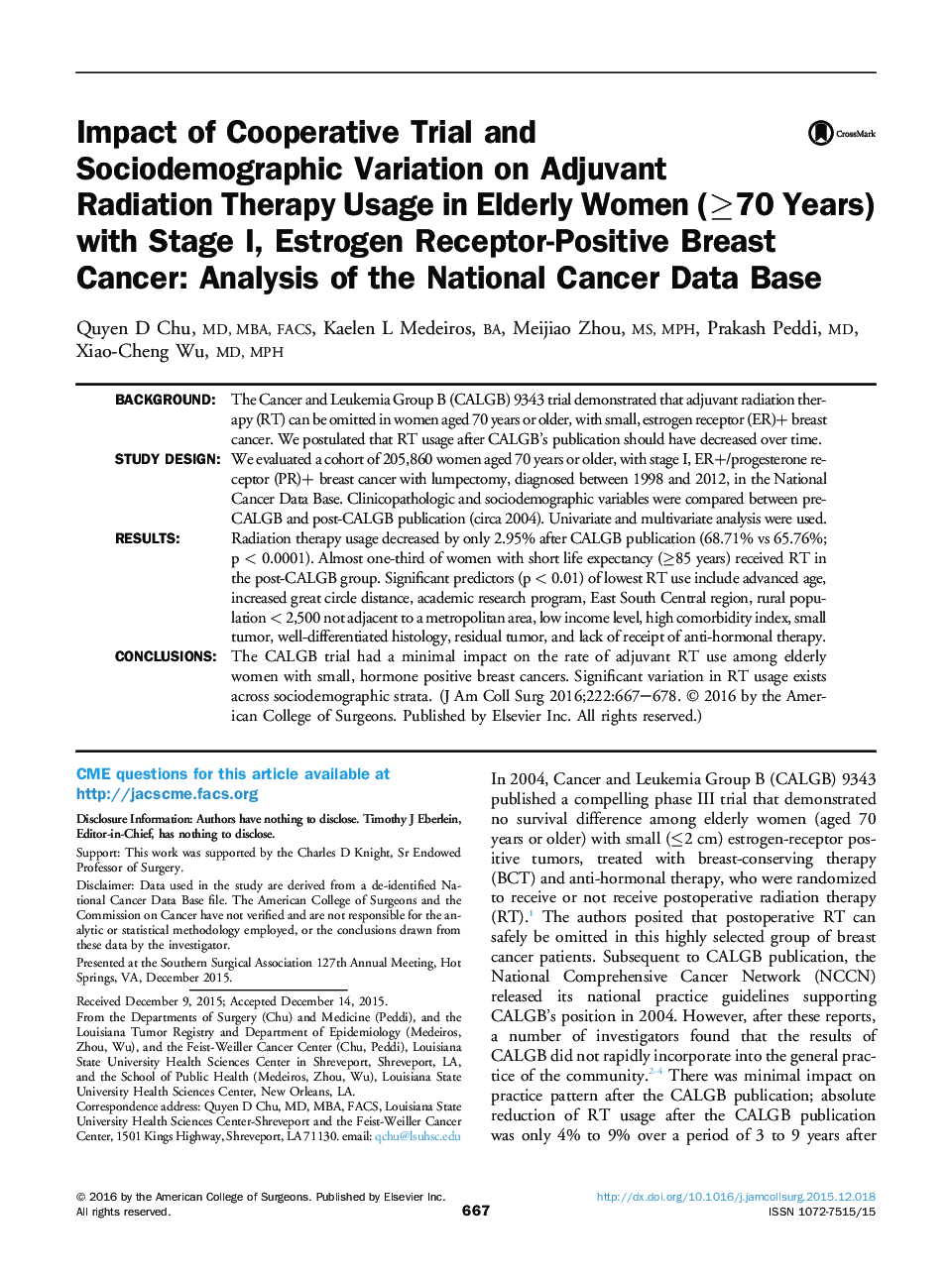| Article ID | Journal | Published Year | Pages | File Type |
|---|---|---|---|---|
| 4290773 | Journal of the American College of Surgeons | 2016 | 12 Pages |
BackgroundThe Cancer and Leukemia Group B (CALGB) 9343 trial demonstrated that adjuvant radiation therapy (RT) can be omitted in women aged 70 years or older, with small, estrogen receptor (ER)+ breast cancer. We postulated that RT usage after CALGB's publication should have decreased over time.Study DesignWe evaluated a cohort of 205,860 women aged 70 years or older, with stage I, ER+/progesterone receptor (PR)+ breast cancer with lumpectomy, diagnosed between 1998 and 2012, in the National Cancer Data Base. Clinicopathologic and sociodemographic variables were compared between pre-CALGB and post-CALGB publication (circa 2004). Univariate and multivariate analysis were used.ResultsRadiation therapy usage decreased by only 2.95% after CALGB publication (68.71% vs 65.76%; p < 0.0001). Almost one-third of women with short life expectancy (≥85 years) received RT in the post-CALGB group. Significant predictors (p < 0.01) of lowest RT use include advanced age, increased great circle distance, academic research program, East South Central region, rural population < 2,500 not adjacent to a metropolitan area, low income level, high comorbidity index, small tumor, well-differentiated histology, residual tumor, and lack of receipt of anti-hormonal therapy.ConclusionsThe CALGB trial had a minimal impact on the rate of adjuvant RT use among elderly women with small, hormone positive breast cancers. Significant variation in RT usage exists across sociodemographic strata.
